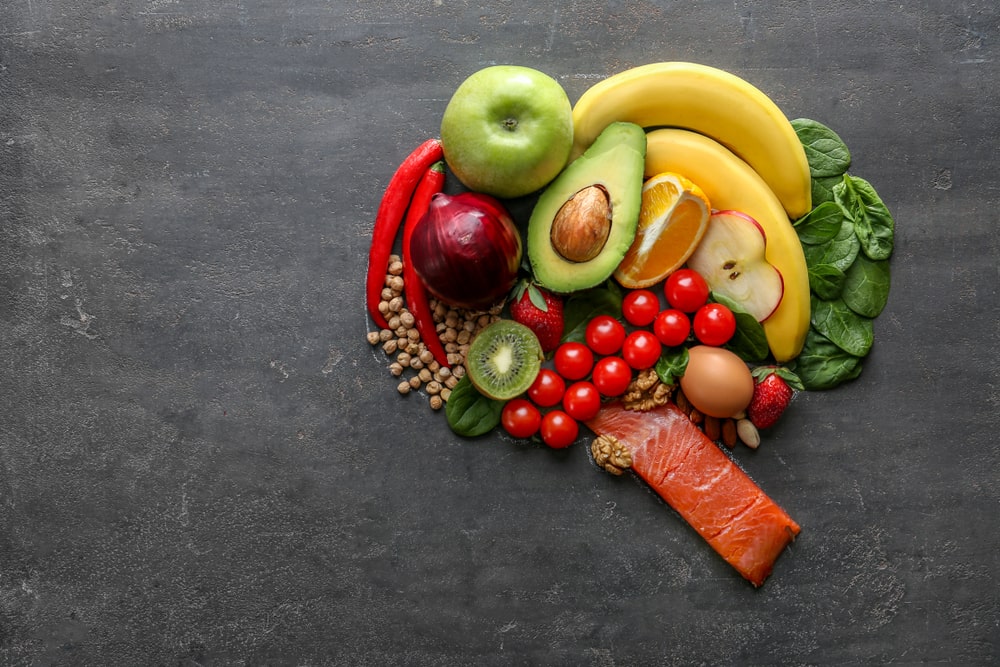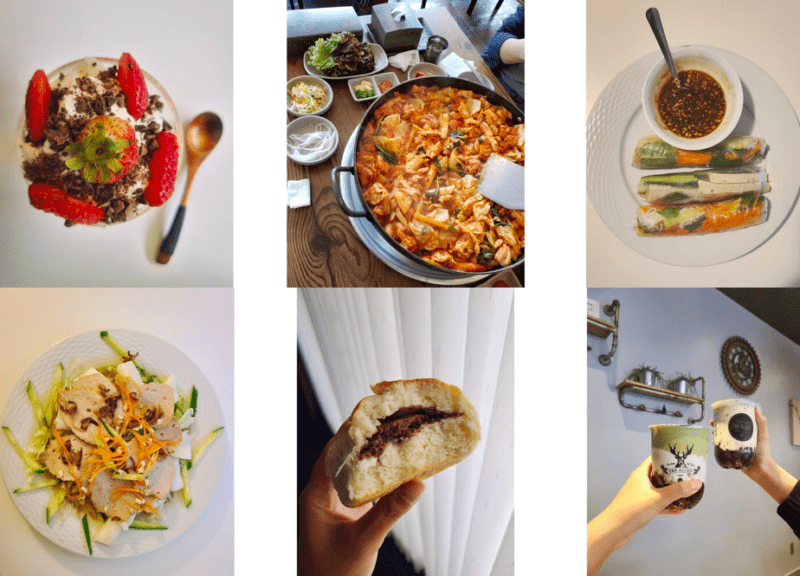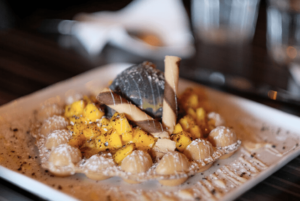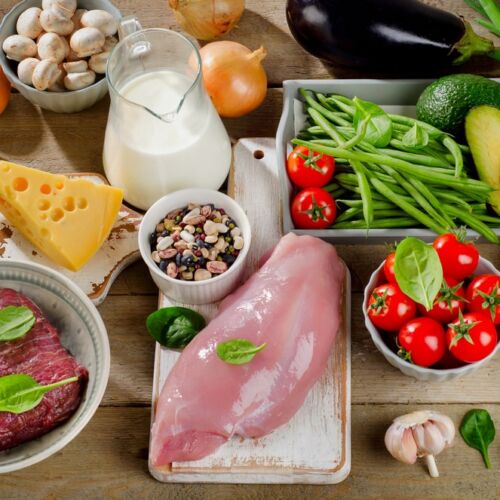Interview with Esther Lac, Dietitian at Trellis Nutrition
by Kristine

Esther Lac is a Registered Dietitian who passionately advocates for cultural awareness and mental health in nutrition and dietetics through storytelling on social media.
She provides nutrition and behaviour change counselling to mitigate emotional eating and shift away from diet culture.
She shares real-life narratives of the Asian Canadian and Asian American experience, struggles, and triumphs with food and body image through social media by using #AsianThoughtPlate.

Esther Lac’s Journey to becoming a Registered Dietitian:
What made you want to become a Dietitian?
I wanted a career that involved working with people, and my tutor in high school took that desire and suggested dietetics as a potential profession.
I was taking psychology as an option in high school and I was really enjoying it. We watched a documentary on Anorexia Nervosa in class. My heart felt so much compassion for people struggling with an eating disorder that I just wanted to learn more!

Describe what you do for work?
Dietetics is such a versatile and diverse profession; consequently, that’s reflected in how I answer the question of what I do for work.
I like to say that by day, I’m an acute care clinical dietitian. I work in hospitals with all sorts of patient populations from trauma; to surgery; to medicine; and to mental health.
In the evening I do private practice where I provide nutrition counselling for behaviour change, as well as write blogs on the topic of culture and its influence on our relationship with food and body image.
Where do you see yourself within the next 5-10 years of working as a Registered Dietitian?
A lot can change and happen in even a year, let alone 5 to 10. If you asked me a year or two ago, or when I was still a student, I would tell you that I would be working as an Eating Disorder RD.
Recently I’ve warmed up to a lot of other directions that a career in dietetics could take me. I learned how much I love working in a hospital, but I also can’t abandon my first love for counselling and behaviour change.
Outside of dietetics, I spend a lot of time leading youth programs and supporting mission work at church.
It would be amazing if dietetics could have something similar to Doctors Without Borders. Tackling malnutrition and food security abroad is an attractive thought, for sure!
What do you enjoy the most about working as a Dietitian?
I love how diverse the profession is because work is never mundane. We work with people, not problems. We work with communities, not nameless statistics.
A Registered Dietitian will help people feel empowered in their food choices and in their bodies. No two clients are the same, and no two workdays are ever the same either.
What is the most common misconception people have when meeting with you?
A lot of people I meet assume that I will judge what they’re eating. Some feel self-conscious about eating around me as if I was the food police.
On the other hand, Dietitians really aren’t like that at all, but I know how prevalent that misconception is. I used to think that way about Dietitians too. I often felt pressured to have a balanced and varied lunch every day during my first rotation in an internship.
This illusion really broke down one day when my preceptor opened her candy drawer in the office and offered me some Skittles. We’re humans and we love food!
In the end, I care about how people relate to food more than the actual food on their plates.

What is one piece of nutrition advice you would want to give to everyone?
If food provides even one nutrient, it is nutritious and can be a part of your eating pattern and lifestyle. #AllFoodsFit
Day in a life of a Registered Dietitian
What type of clients do you see most often while working as a Registered Dietitian?
In private practice, the majority of my clients are seeking help with emotional eating, binge eating, nighttime snacking and almost always initially with the goal of weight loss.
Does your approach change when meeting clients with eating disorders?
If a client has an eating disorder, depending on where they are in their recovery journey, the approach that would be most helpful and safe for them will differ.
For example, there are times when structured meal plans that promote mechanical eating are necessary when clients do not or cannot rely on hunger and fullness cues to tell them when to eat.
How often do you encounter Eating Disorders versus disordered eating?
An Eating Disorder is a formal diagnosis made by a psychiatrist or psychologist following DSM-V criteria – an individual met diagnostic criteria for Anorexia Nervosa, Bulimia Nervosa, Binge Eating Disorder or OSFED (Other Specified Eating or Feeding Disorder).
Disordered Eating is not a diagnosis, but a description of any eating or food-related behaviours that are deemed unhealthy:
- restricting
- binging
- purging
- calorie counting
- obsessive weighing
An unhealthy or distorted relationship with food can quickly spiral into disordered eating behaviours. Individuals may not be formally diagnosed with a full-blown eating disorder, but almost all of them display some characteristics of the disordered eating.
People with an unhealthy relationship with food often hold very strongly to food beliefs which they create food rules to follow.
Your website, Trellis Nutrition, highlights the influence of culture on a person’s relationship with food. As a Certified Nutritionist, what is one food habit that you find yourself reverting to because of culturally inherited practices?
In Cantonese, we have a word, 热气 (yeet hay) which translates directly to mean “hot air.” It is often used as an adjective to describe specific foods that are culturally believed to be inflammatory and contribute to discomfort in the form of:
- acne
- canker sores
- sore throats
- irritation
This concept of “yeet hay” has nothing to do with actual temperature, but rather how food affects our body and makes us feel after we eat them.
Traditionally, if we eat too many yeet hay foods (i.e. chips, fried chicken, lychees) we will try to balance it out by eating or drinking something of an opposite “energy” or effect (which also has nothing to do with temperature).
For instance, a popular one is chrysanthemum tea, which I grew up drinking. I find myself wanting chrysanthemum tea when I’m eating primarily yeet hay foods, even if I don’t experience any of the “yeet hay side effects.”

On the Dietitian Directory page, you describe taking an intuitive eating approach to food. What does this look like?
My practice emphasizes healing one’s relationship with food and fostering a deeper appreciation for their body (or body image).
Above all, this means strengthening one’s confidence in making food-related choices, being flexible in how or what they eat, and trusting that their bodies know when they’re hungry and when they’re full.
In conclusion, I encourage clients to allow weight goals to become secondary. As a result, they can recognize and appreciate how changes in eating behaviours are benefiting them mentally, physically and emotionally.

Authors: Kristine To Dietitian student and Esther Lac, RD, owner of Trellis Nutrition
Connect with Esther here, or on Instagram @nerdesther



